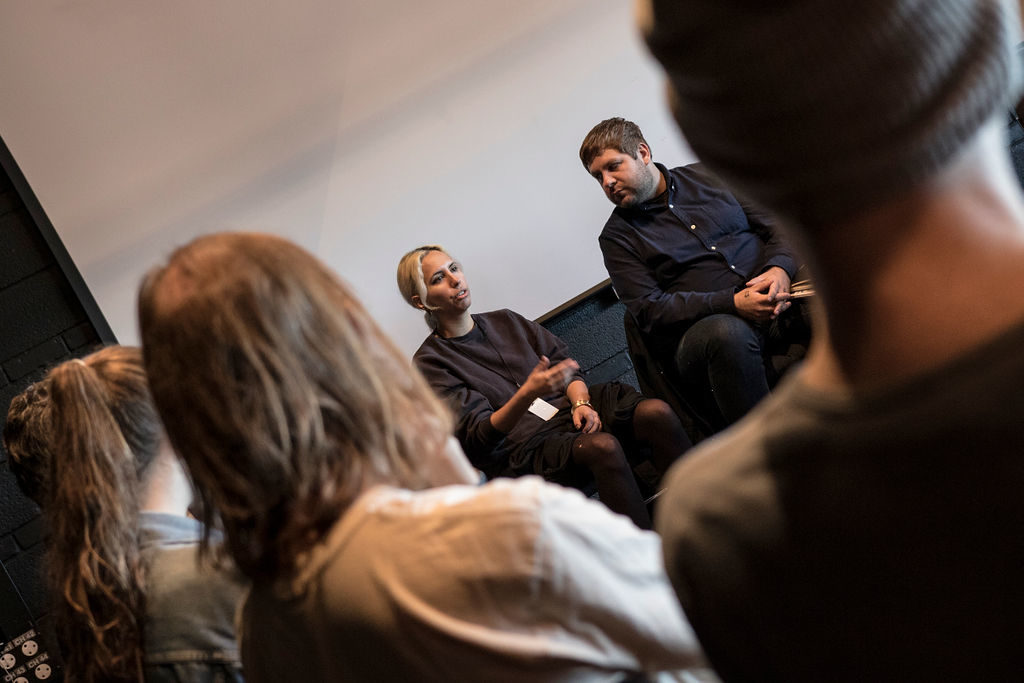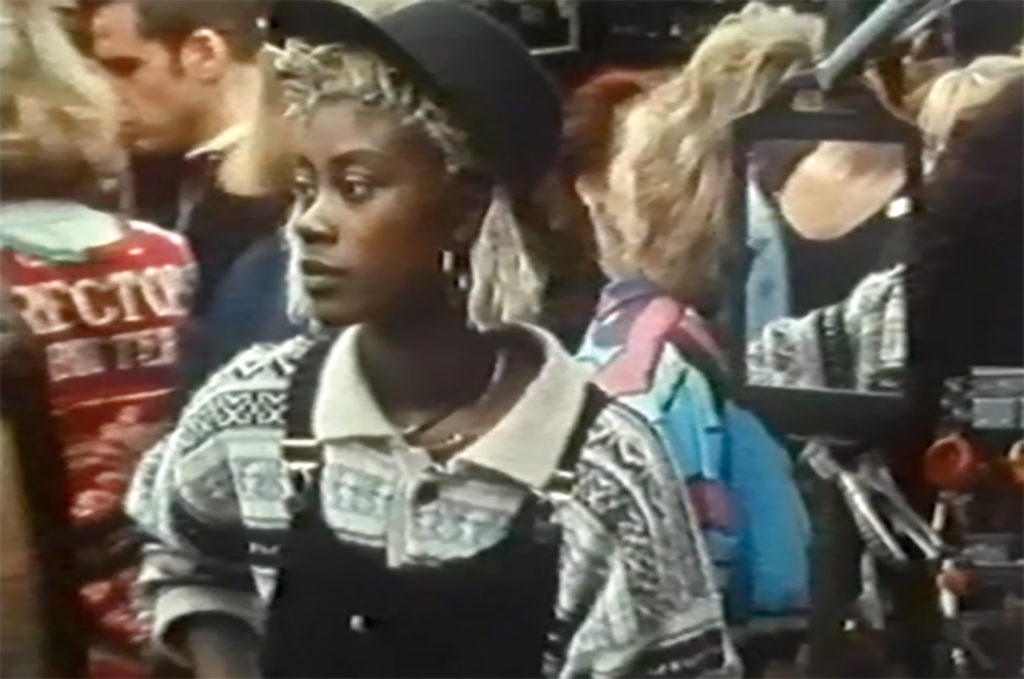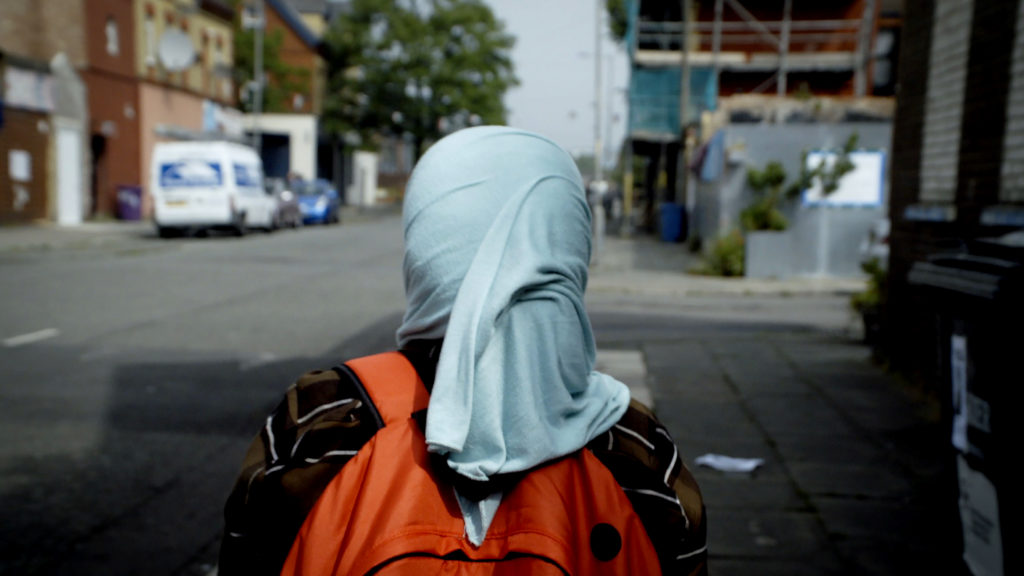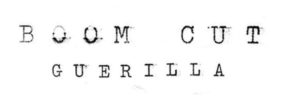“What does a native cinema look like without the burden of creating contexts or explaining to others?” asks filmmaker Sky Hopinka at the 14th edition of Berwick Film & Media Arts Festival (BFMAF). It’s a question refracted through the programming of this year’s ambitious selection of international artists brought to the English border town of Berwick-upon-Tweed. Running September 20 to 23 and taking over multiple venues in the small northern location, there were a number of programming strands. These included the Essentials Cinema, which revisited ‘overlooked masterpieces’ like Soda_Jerk’s ‘TERROR NULLIUS’ political satire and a retrospective of works by Los Otros, who were invited to share their experiences leading the experimental filmmaking scene in the Philippines. Artist in Profile Sophia Al Maria’s film ‘The Magical State’ (2017) was exhibited in an 18th century gunpowder magazine alongside other short works, and the The Berwick New Cinema competition screened recent work by Beatrice Gibson, Hardeep Pandhal and Tamara Henderson, among others.

Posed as a challenge to the usual grouping of international cinema along national or ethnic lines, guest curator Dr. Graiwoot Chulphongsathorn also presented a programme of Asian cinema organised around the idea of ‘the forest.’ He suggested an alternative approach to film curation, in this case taking the natural world as a point of departure instead. This inclination seemed to set the tone for a wider discussion around the nature of filmmaking from the margins, directed towards questions of identity, belonging and the representation of otherness.
For his film ‘Dislocation Blues’, which screened for a second time after winning BFMAF’s New Cinema Award in 2017, Hopinka interviewed two participants of the resistance against the Dakota Access Pipeline construction at Standing Rock Reservation. The interviews, offering two different generational perspectives, reflect common thoughts about this particular moment in time for indigenous peoples in North America: a utopian sense of community and the feeling that something both monumental, as well as tragically ephemeral, is occuring. The account of their experiences is told against footage of the camp, where ritual ceremonies and celebrations, the mundane organising of supplies and public meetings occur. There are the tense moments of gearing up for ‘battle’ with the omnipresent, yet never visible, security guards who constantly threaten to remove them. A more introspective stream of thought, offered by the younger of the two interviewees, Cleo Keahna, questions a romanticising, mythologising tendency towards events at Standing Rock, “everything for all of us is with them in mind (white people).” Taking into consideration a media hungry for images and interviews — alongside the historically negative representation of indigenous Americans — Keahna mulls over a reluctance to criticise one’s own (already marginalised) community at the cost of a more nuanced record.

The bodies belonging to these two voices are kept protected from the viewer’s gaze, and the supplementing footage likewise keeps a cool distance, reflecting Hopinka’s concern not to exploit his own community for an outside audience. Questioning the desire to look at the events of Standing Rock, as well as a want to record his own feelings about being there and filming, he charts the complexity of at once belonging to the subject and by nature of holding a camera, being made outsider.
“I felt dislocated when I was there, as an Indigenous person on land that was tribal, but not of my tribe,” says Hopinka as he reads out extracts of text to us from his debut publication Around The Edge of Encircling Lake (2018). An act of creative generosity, his live reading at the festival adds further layers of understanding for the audience. He points out how, “the politics surrounding identity are such that one must be an expert on almost everything concerning your own culture… It’s a bleary oscillation between these modes of being: presenting and performing.” If there is such a thing as a radical ethnography, the pursuit of it would be understanding one’s own cultural identity in the context of its relation to other groups of people (in this case the audience of a film festival). More often than not, it’s a relationship shaped by an asymmetrical power exchange. Based on this definition, a radical ethnographic record might look something like this film.

Sharing a similar nuance and poignancy to ‘Dislocation Blues’, Callum Hill’s film ‘Crowtrap’ emerges out of a specifically British, ‘what-the-fuck-now’ political moment. The New Cinema Award winner is captured mostly on 35mm and opens with a handheld shot moving through the galleries of Tate Britain, whilst the film itself appears to be corroded by the image of flames. The words “poor, stupid, England” are muttered in the beginning of an overlayed monologue by the artist. This despondent stream of consciousness, encompassing the artist’s inner dialogue around the film’s making, leads us through separate fragments of a visual narrative. Held together in ways not immediately apparent, ‘Crowtrap’ skips forward and backward between acts of suffragette vandalism, to shots of heather burning in Yorkshire fields, and scenes filmed at a coal yard in East Berlin. References are seeded into earlier shots like clues left by Hill to be searched later on Wikipedia, references which reveal a wide, interconnected map of the artist’s thinking. These details tie the characters to historical tragedies, like the date on a duvet’s fire regulation label matched to that of the 1988 Piper Alpha disaster — the heather burning worker a survivor of this. Or the original white paint flaking from repurposed sections of the Berlin wall, which surround the German coal yard. There’s a desire to unpick the details of these underlying narratives, to understand their interconnection, or instead just awkwardly try to describe the complex terrain of emotions the film surfs.

The final scenes of ‘Crowtrap’ are signalled by Nina Simone’s robust, soothing voice singing, ‘He’s Got the Whole World in His Hands’ and Hill’s narration, “cheesy endings, like the word Brexit, and the rolling credits you are soon to see.” As a kind of synthesis, she suggests “metaphors are just misplaced thoughts we use to grapple with reality. Perhaps what you can trust is only ever right in front you.” In the last shot a baby is being cared for by two women in Hill’s family home, a moment of respite from the masculinity and anger which dominates the majority of the film. The camera pans out to the artist herself, standing watch over a bucket fire in the front garden, poking twigs into the flames. The mood is pensive, neutralised, paced by the steady crackling of fire and the artist’s expression of stoic resignation. It’s a moment which captures the uncertainty of current global politics, the sense of futility this is breeding, and in spite of this, the pockets of hope steadily burning away.
Morgan Quaintance’s film ‘Another Decade’ also premiered at the festival, followed by a lively Q&A. Put together using archive and found footage from the 1990s, the film features documentation of INIVA’s 1994 inaugurating conference ‘Toward a New Internationalism’, as well as a video penpals project between kids in Peckham and Los Angeles during 1994-95. Offcut footage of the penpal exchange captures moments of everyday life, the kind of commonplace the internet has accustomed us to that we rarely see of earlier eras: a boy has his fade shaved in by two friends as they banter about messing it up, two other boys have a fight on the top deck of a Routemaster bus crowded with school kids, a man and a woman demonstrate some karate moves in their living room. These ordinary moments of life for black and brown people in the UK are cut with footage of panel talks and documentary interviews, thematised around the nature of race, culture and power, mostly in relation to the Arts. Familiar faces of the Black British Arts movement discuss the anthropological ghettoising or commodification of black and brown artists, and reject clamouring for space at the centre of a white art world. Statements included here echo contemporary conversations around the pitfalls of representation; naturally the audience looks to track how much has changed in 30 years.
In a discussion with Quaintance about the issues surrounding his work, he suggested to me how the cyclicality of conversations around visibility and diversity serve only to keep people of colour stuck in one place, constantly battling with rejecting this centre. “Take yourself to the centre of Otherness,” instead, he stated, paraphrasing a talk by Everlyn Nicodemus, featured towards the end of the film. Hinting at the logic behind editing ‘Another Decade’, he added, “when have you ever seen two people of colour in Karate suits just doing Karate in the living room, not framed as something beautiful, transcendent, gorgeous… they’ve just had their cigarette and they’re chilling.”

In her film ‘How Does an Invisible Boy Disappear?’ Rehana Zaman also mines the archive of black British filmmaking, using footage of anti-racist organising in 1980s Liverpool. Alongside this is footage filmed by the young British Somali girls who make up Liverpool Black Women Filmmakers, a group Zaman was invited to collaborate with by a women’s education centre. The film cuts between scenes of a fictional narrative about a boy who goes missing, written and performed by the girls. There’s also handheld footage of them chilling together, discussing Channing Tatum’s breakup, for instance. Though suffused with humour, the girls also grapple with more serious questions affecting them, such as why black women are stereotyped in media representation, as well as frank reflections on heritage and identity. “I’m Black British, but I’m also Somali,” says one of them, “I don’t know that much about my heritage. My heritage is quite weird, in a way.” The depiction of these young people made some of the most memorable and vivid characters of the festival’s programme.
In a conversation with Zaman, the artist spoke of wanting to create a record of intimate, tender moments, rather than presenting a cohesive political comment. Indeed, the film feels like a lighthearted but genuine portrait of the girls’ lifeworlds; as something distinct from the backdrop of police injustice and public Islamophobia we might expect to hear about first. It’s a distinction earned by putting the camera in their hands, and asking them ‘what do you want to see?’ without the pressure of pandering to the usual formal concerns. The film offers a kind of soft space for figuring out questions of identity and heritage, beyond which is a lasting cultural document of a particular moment in time.**















